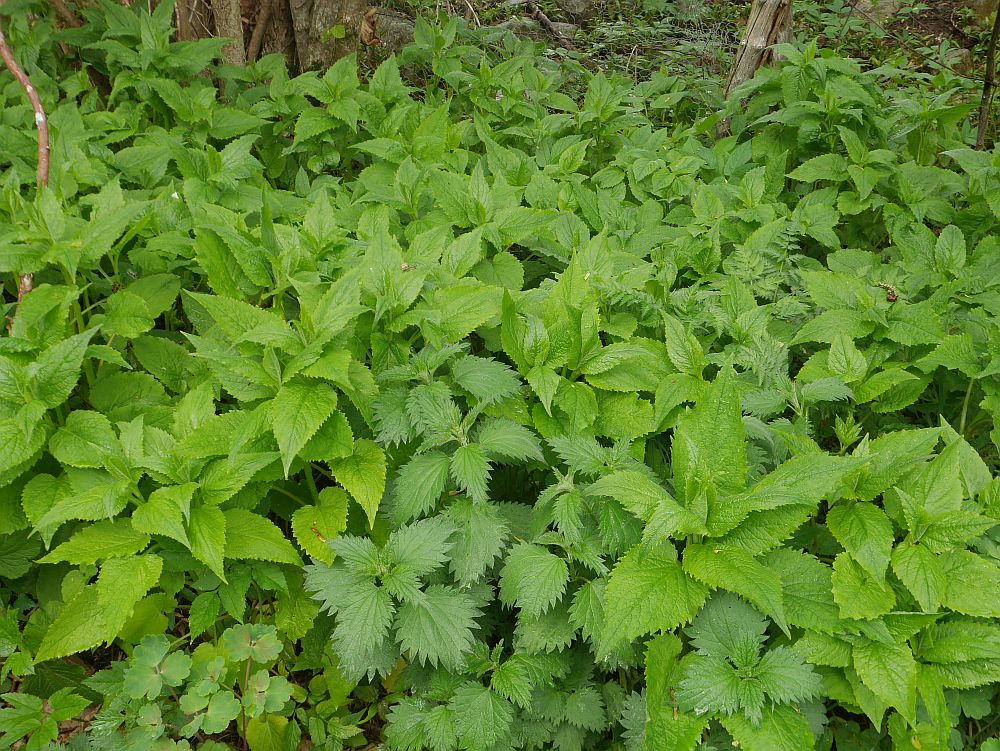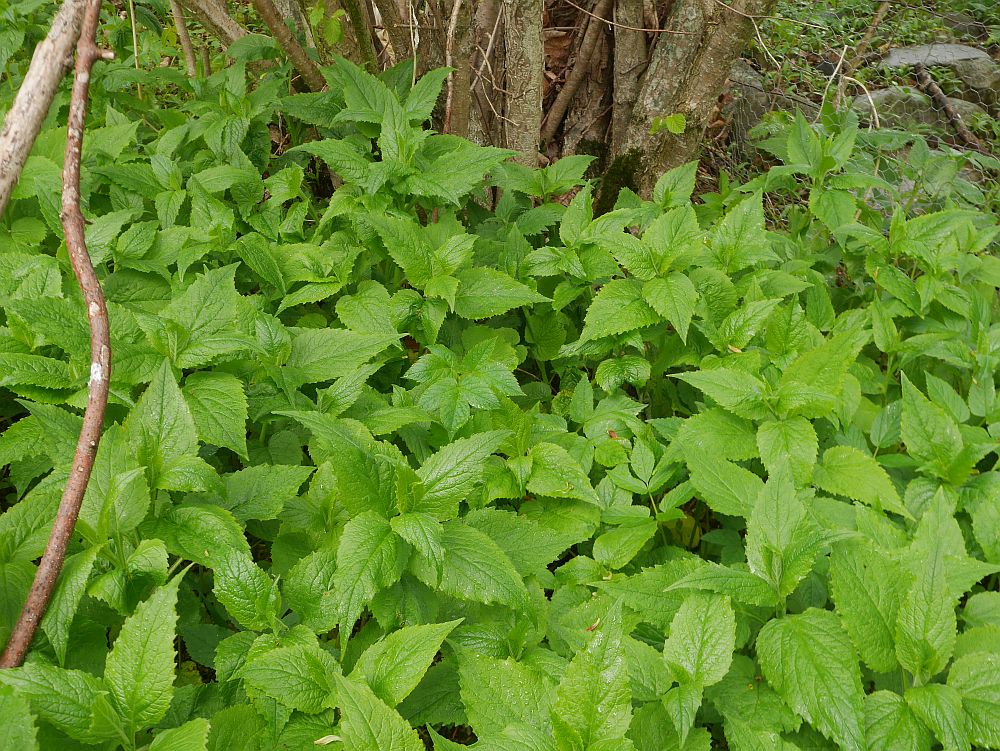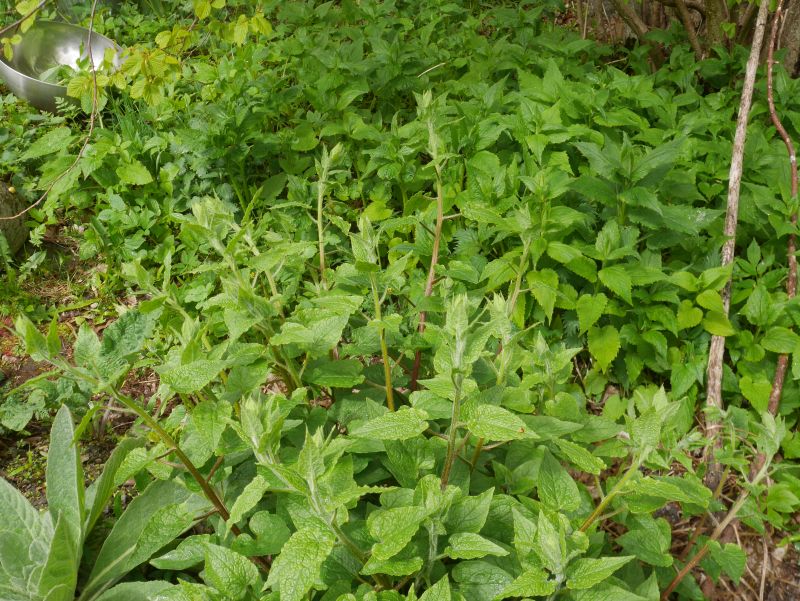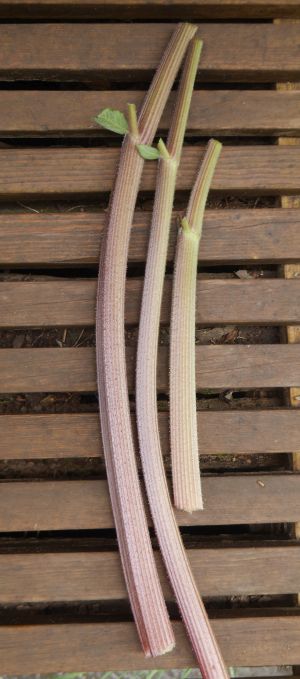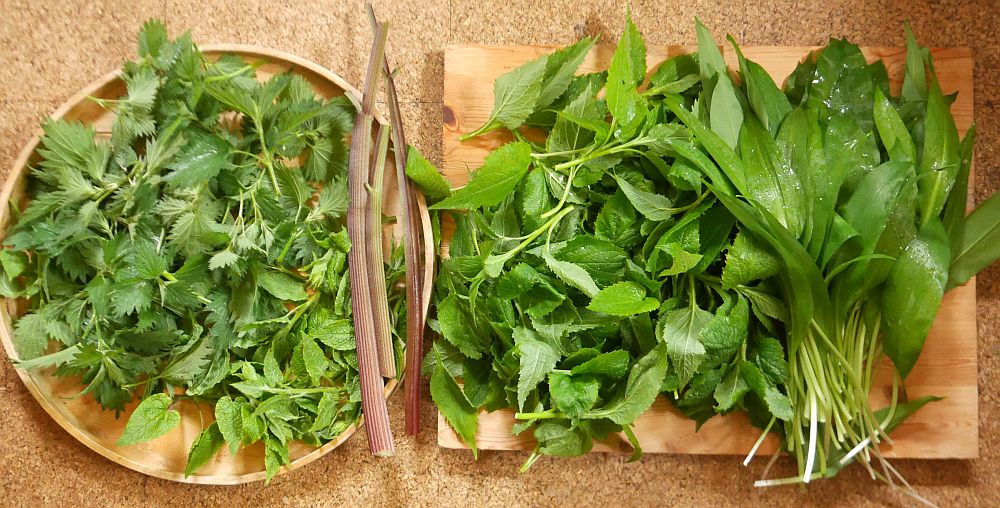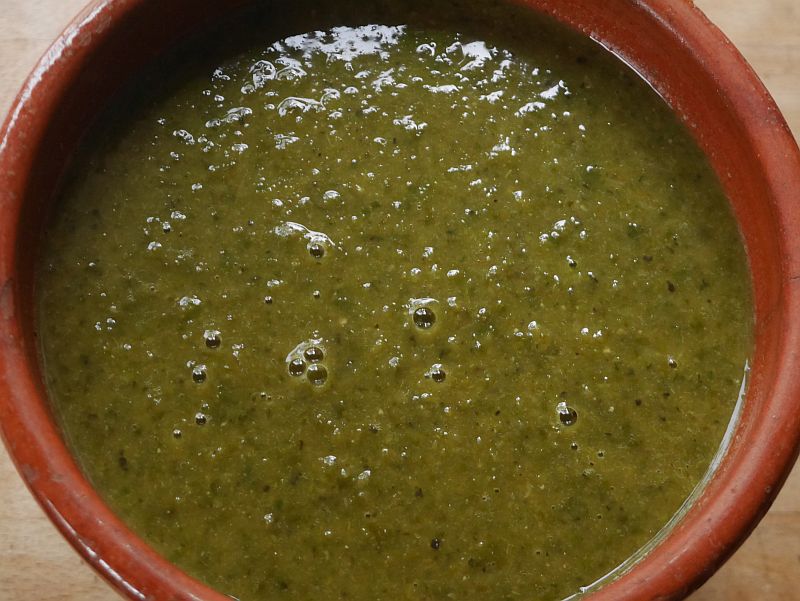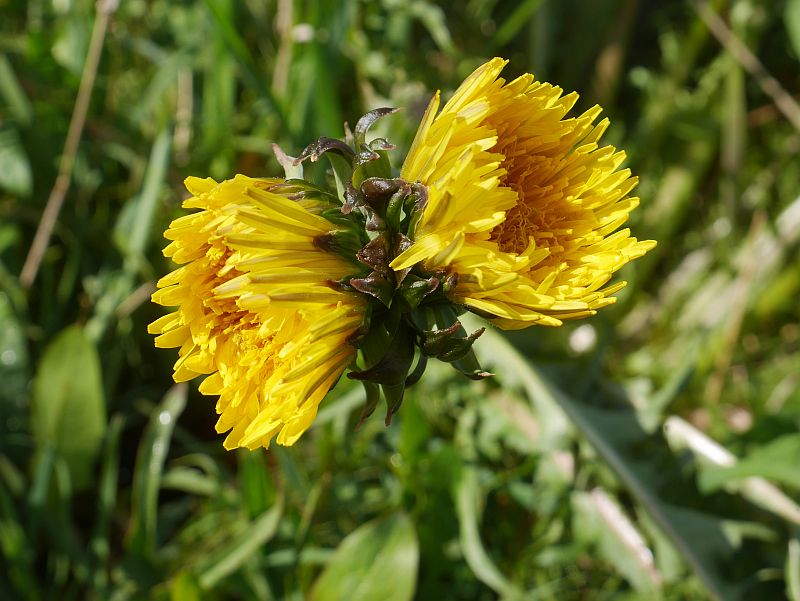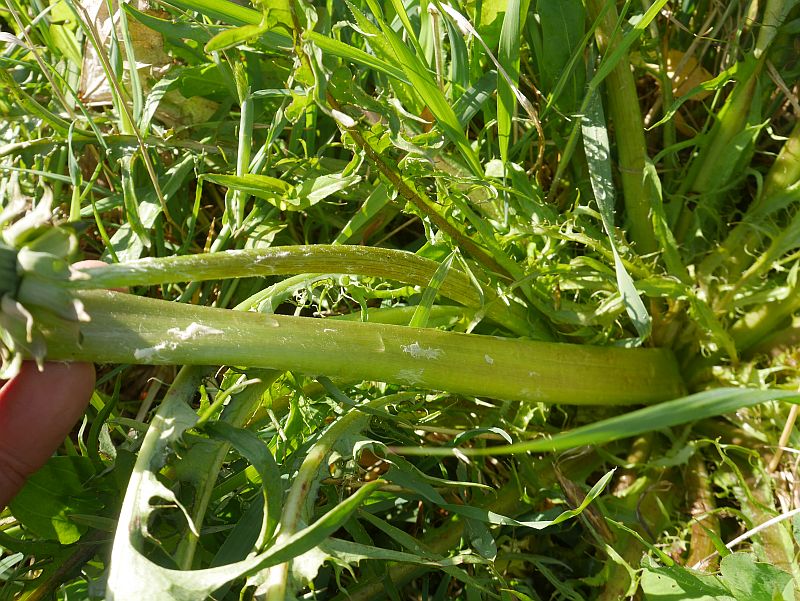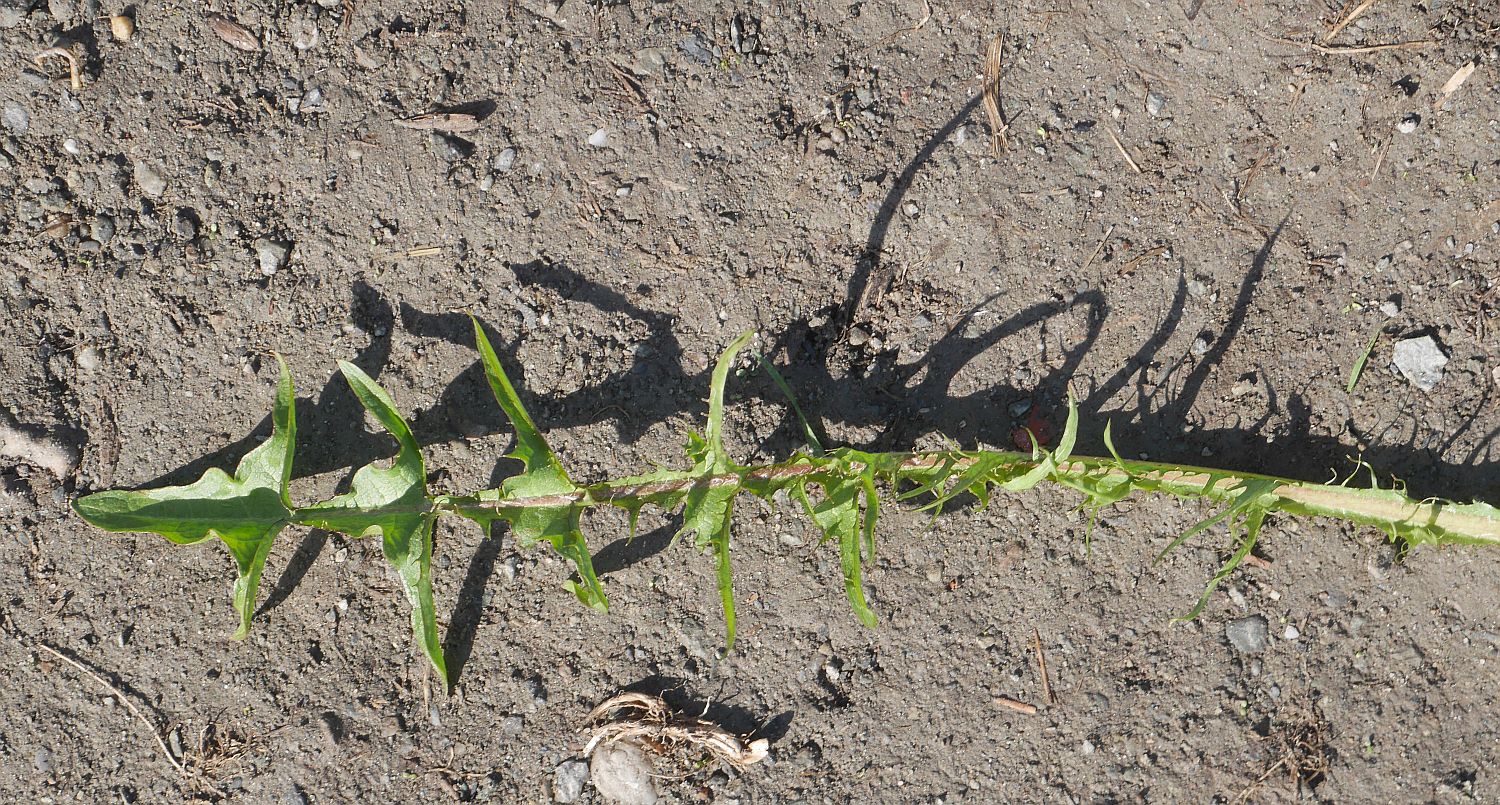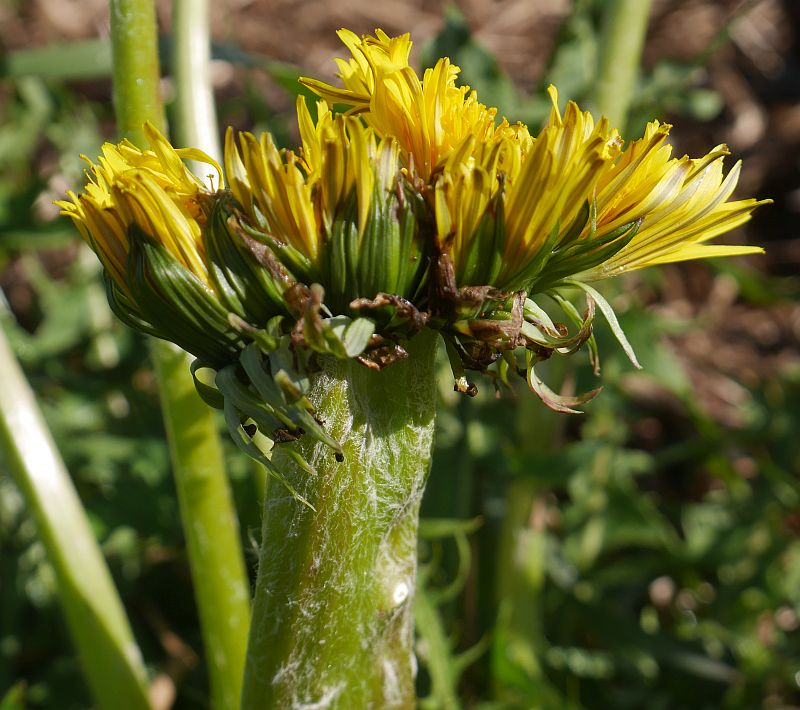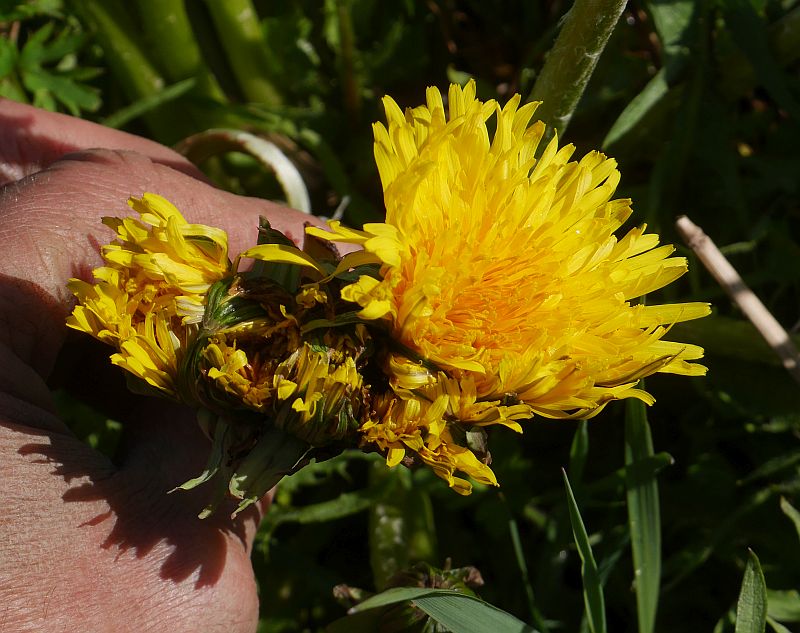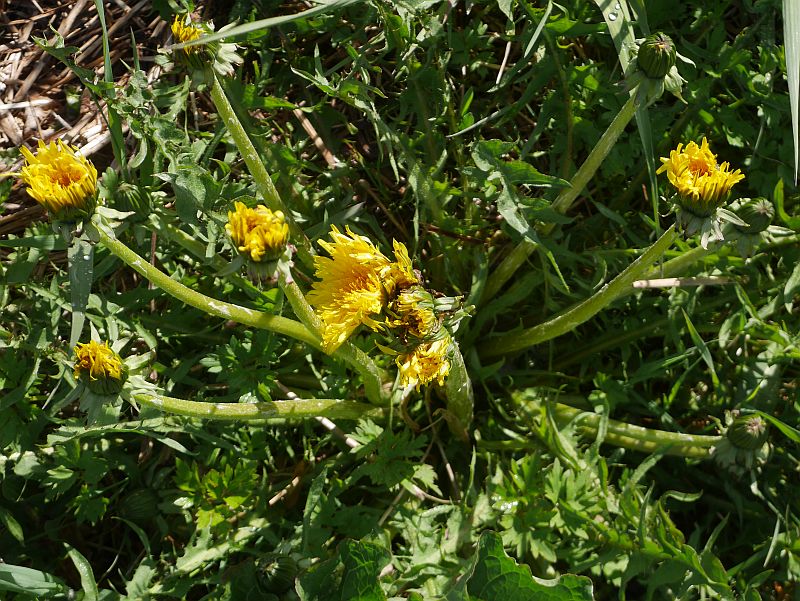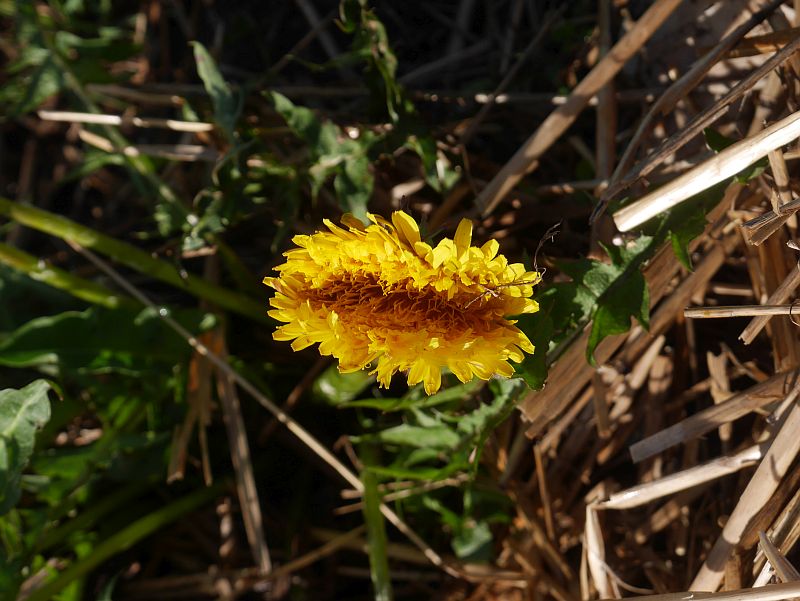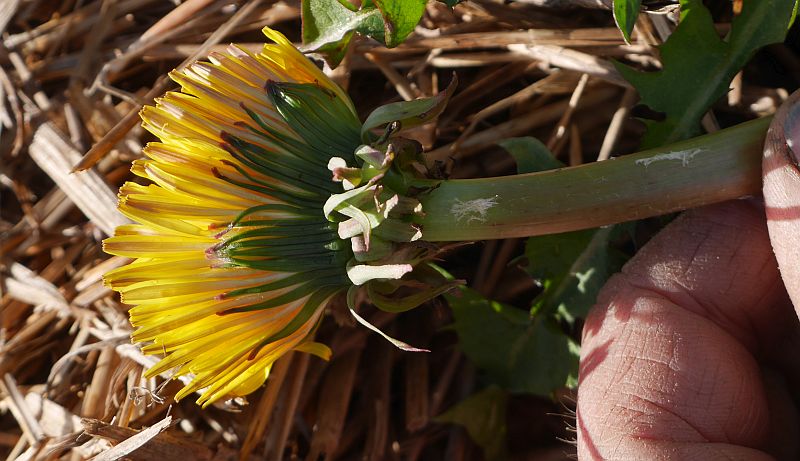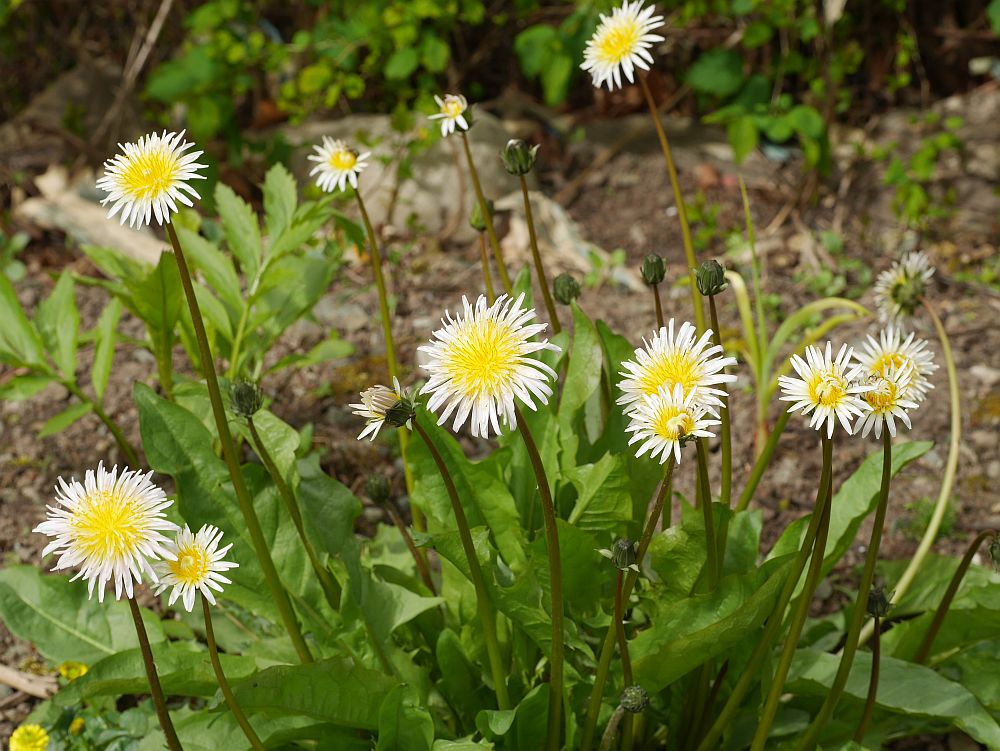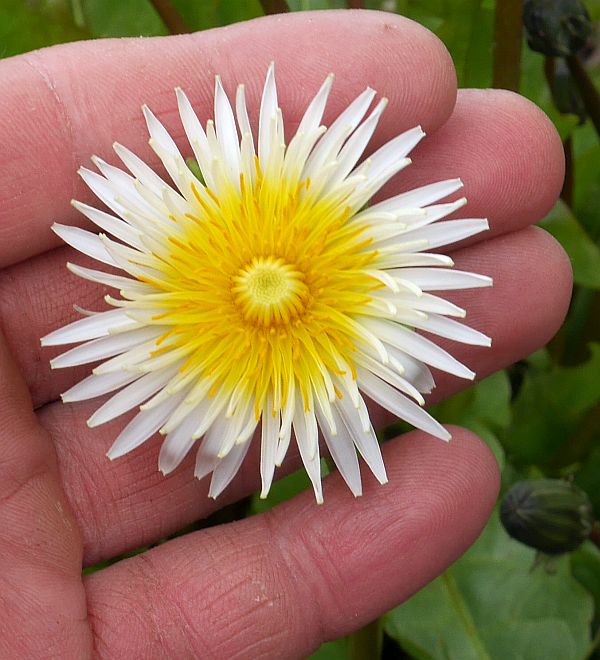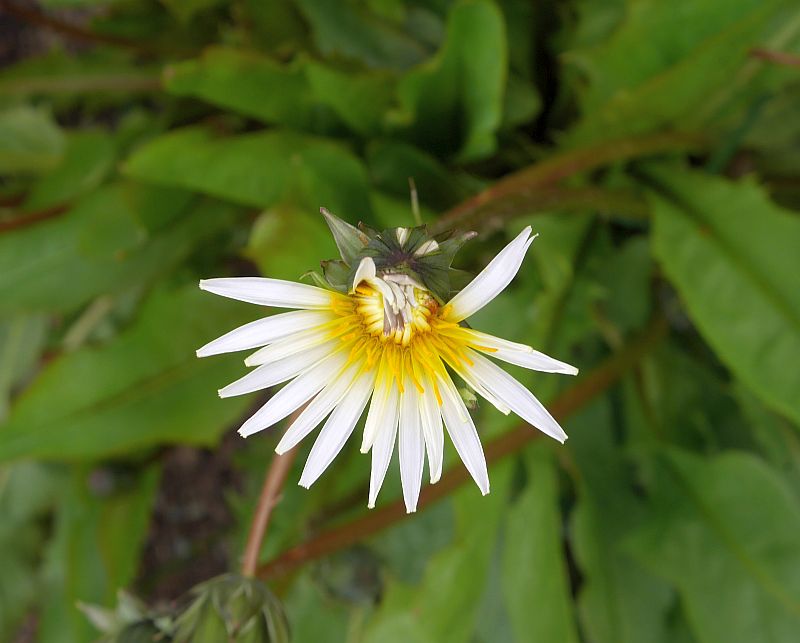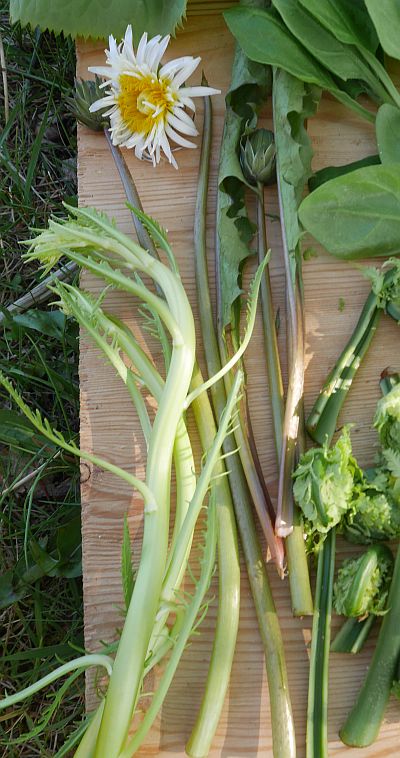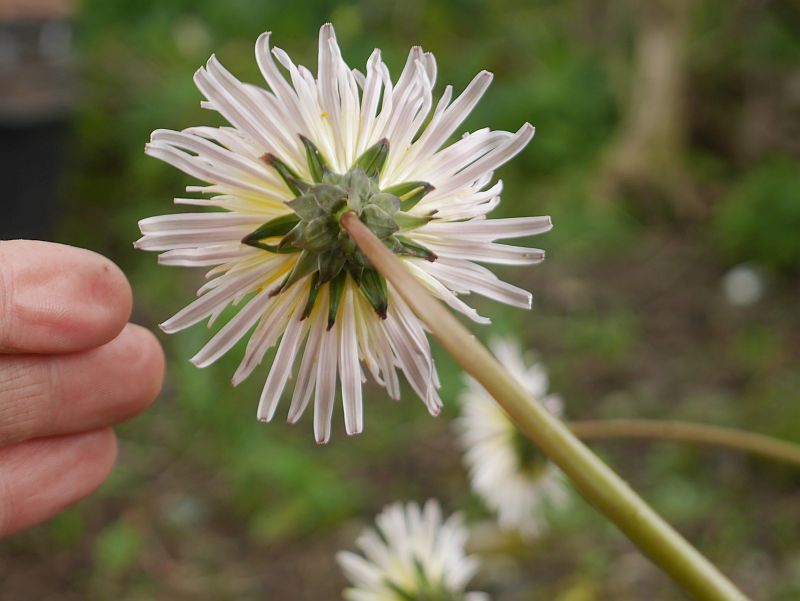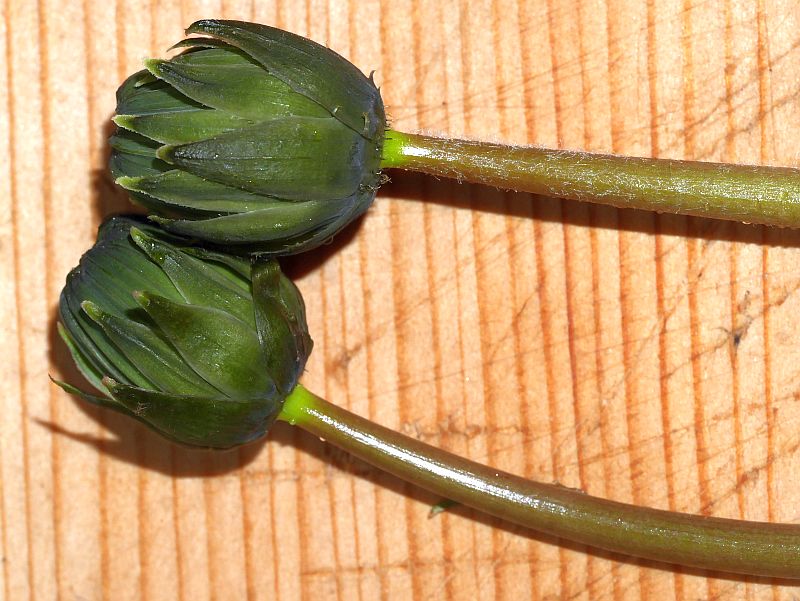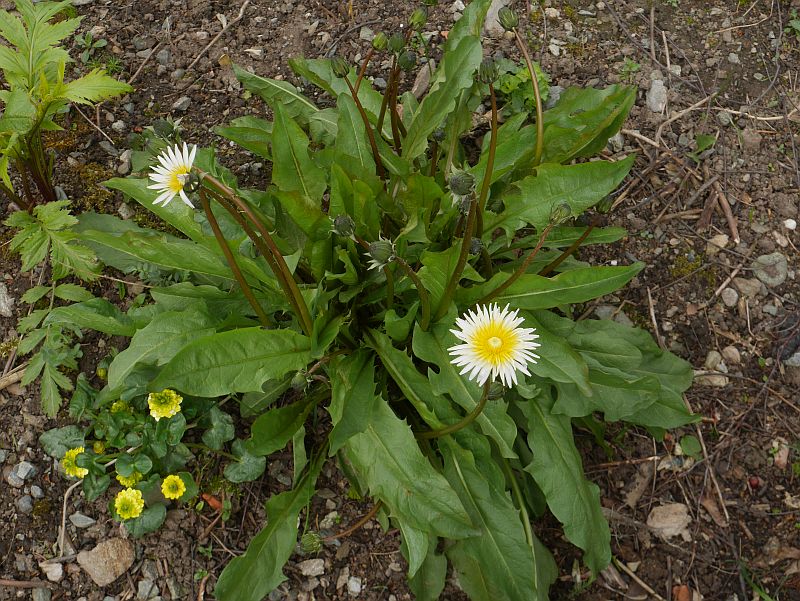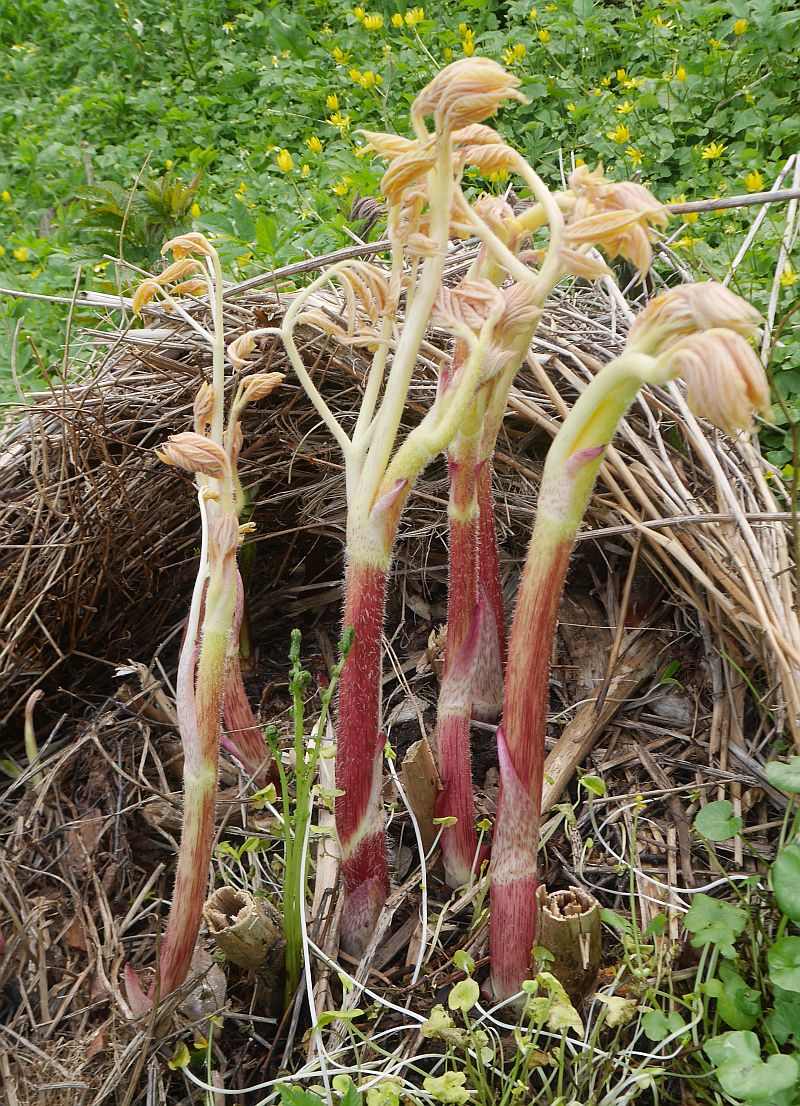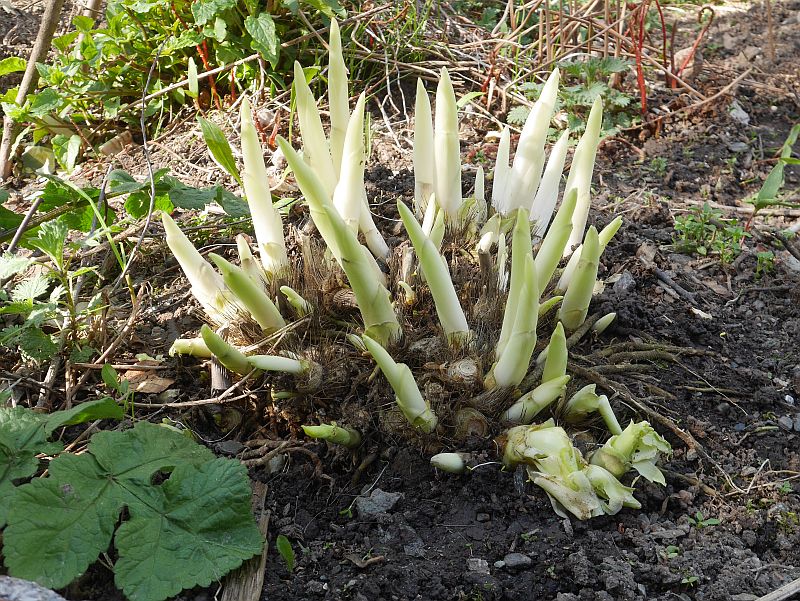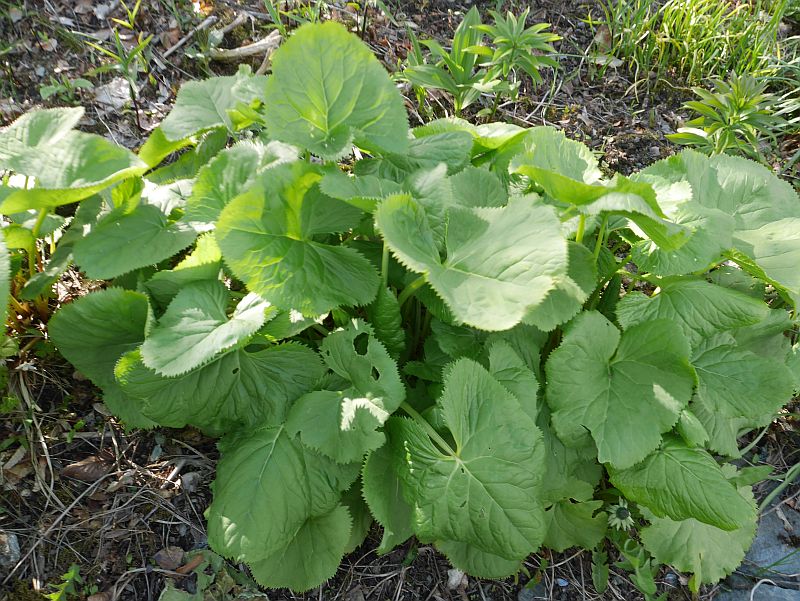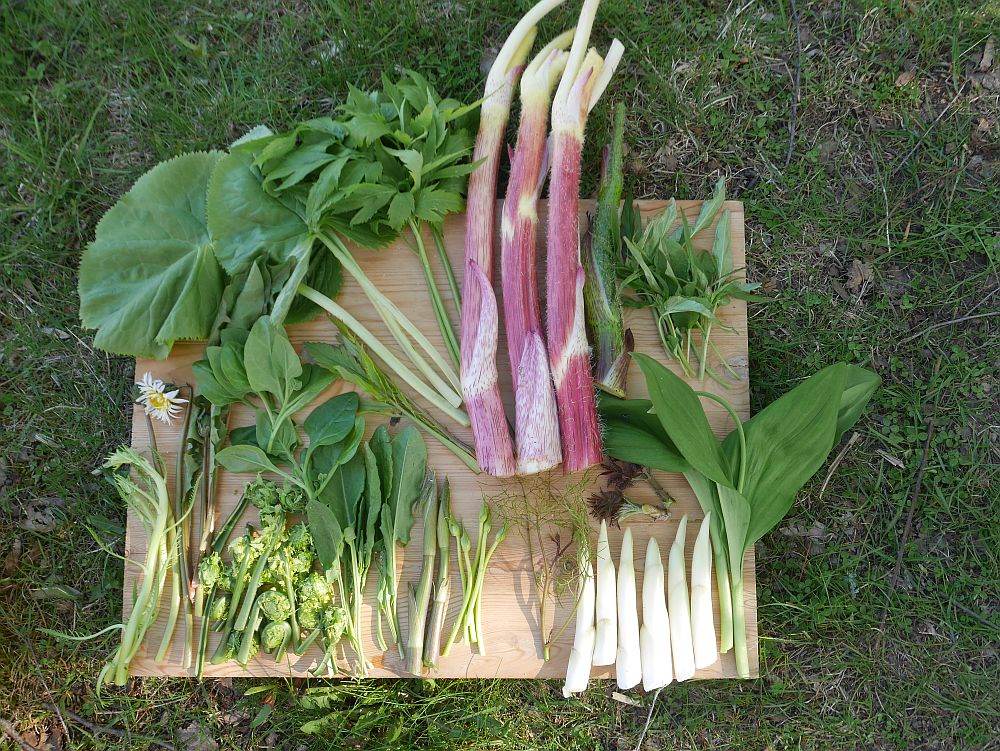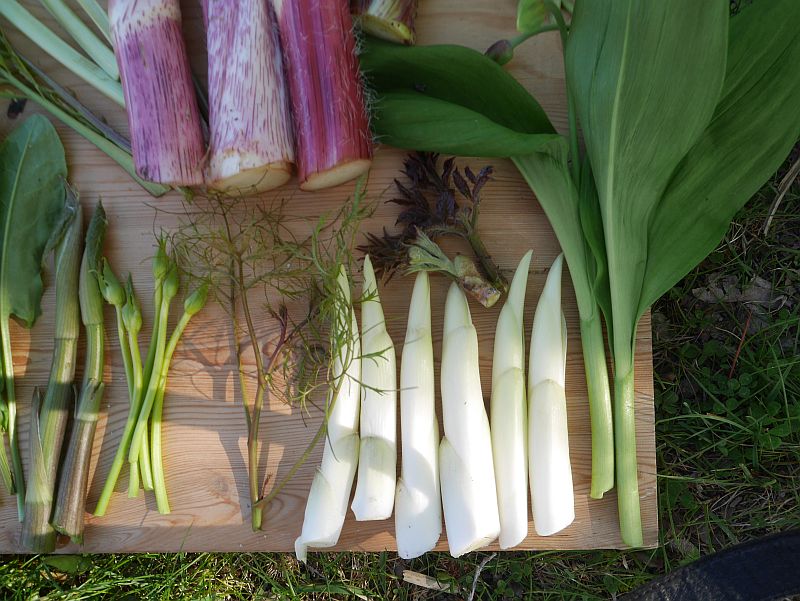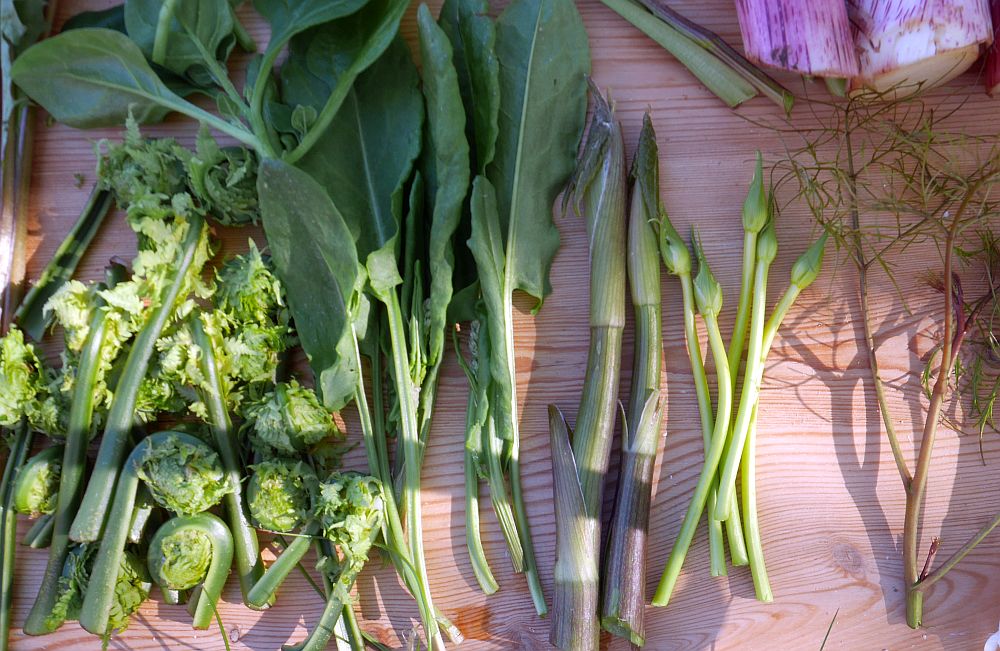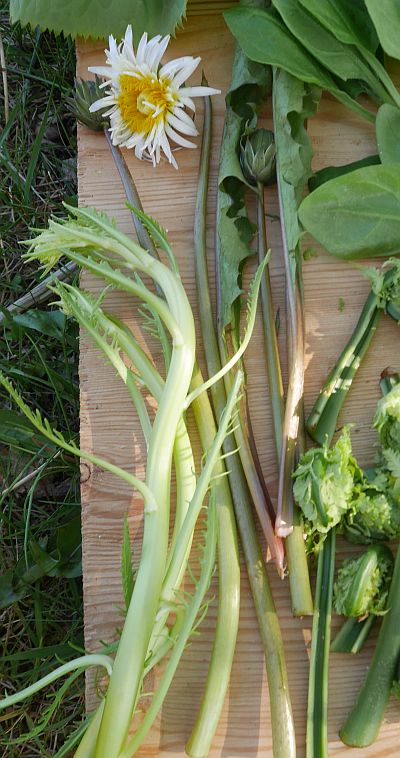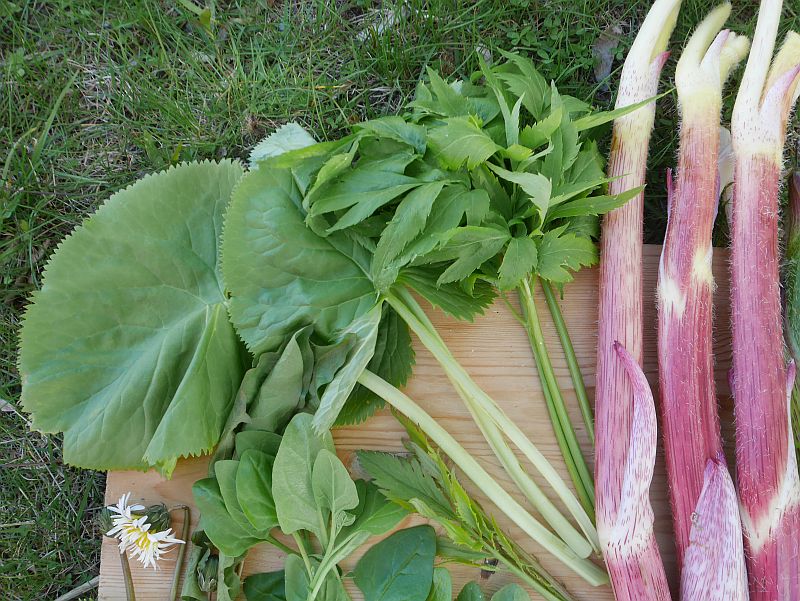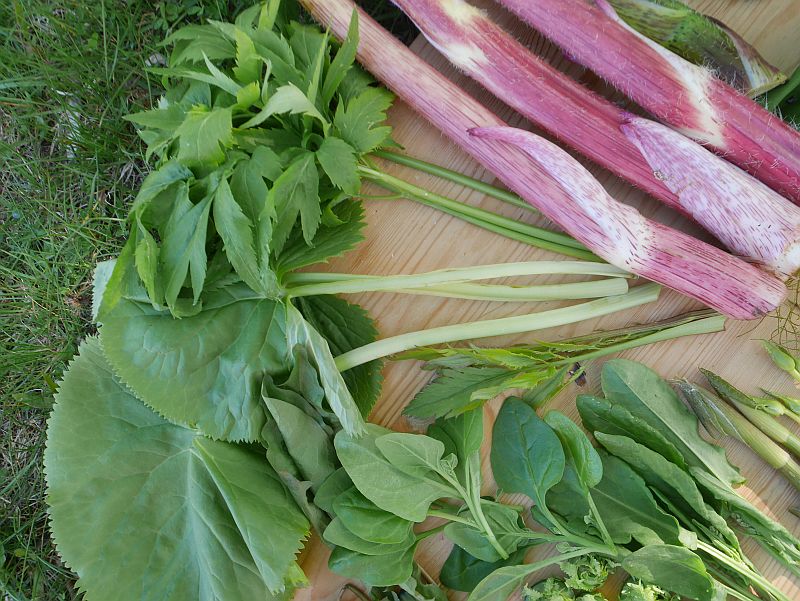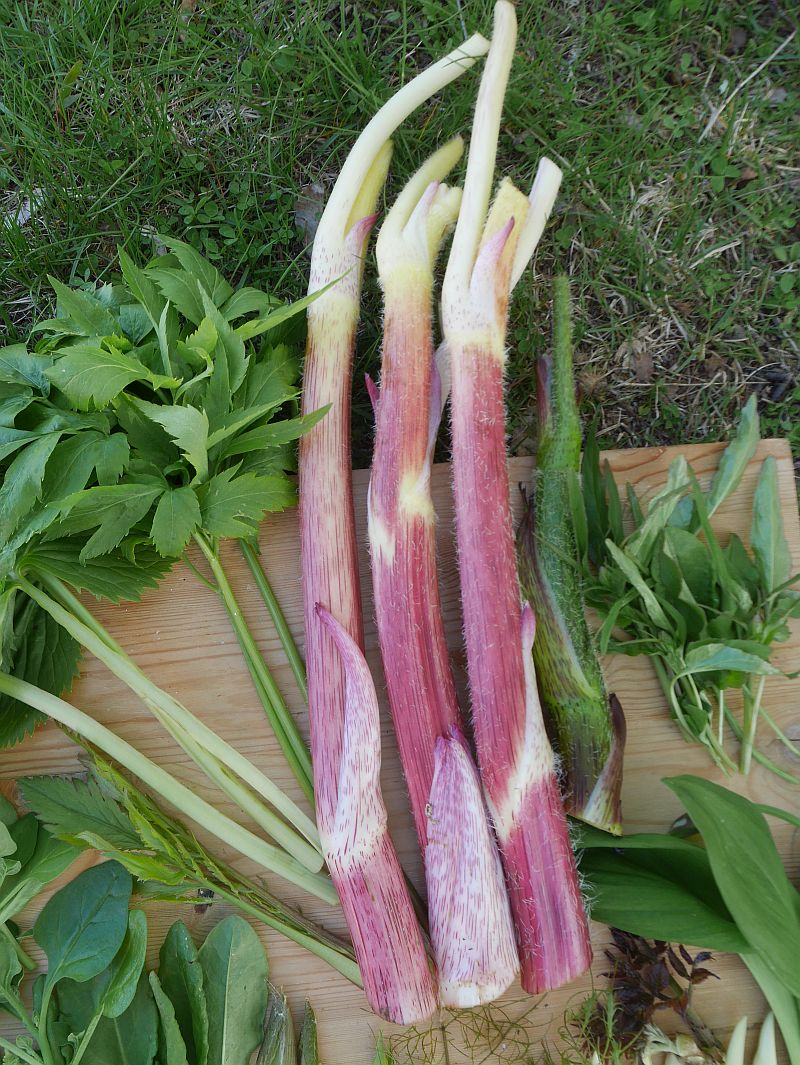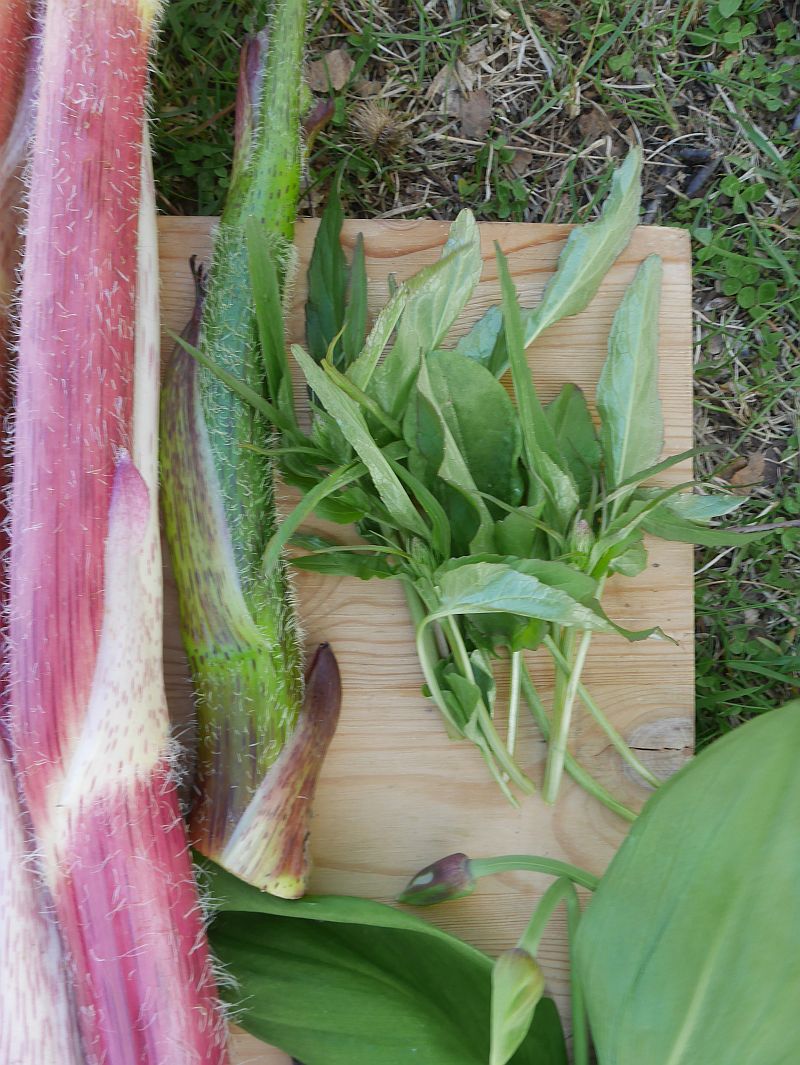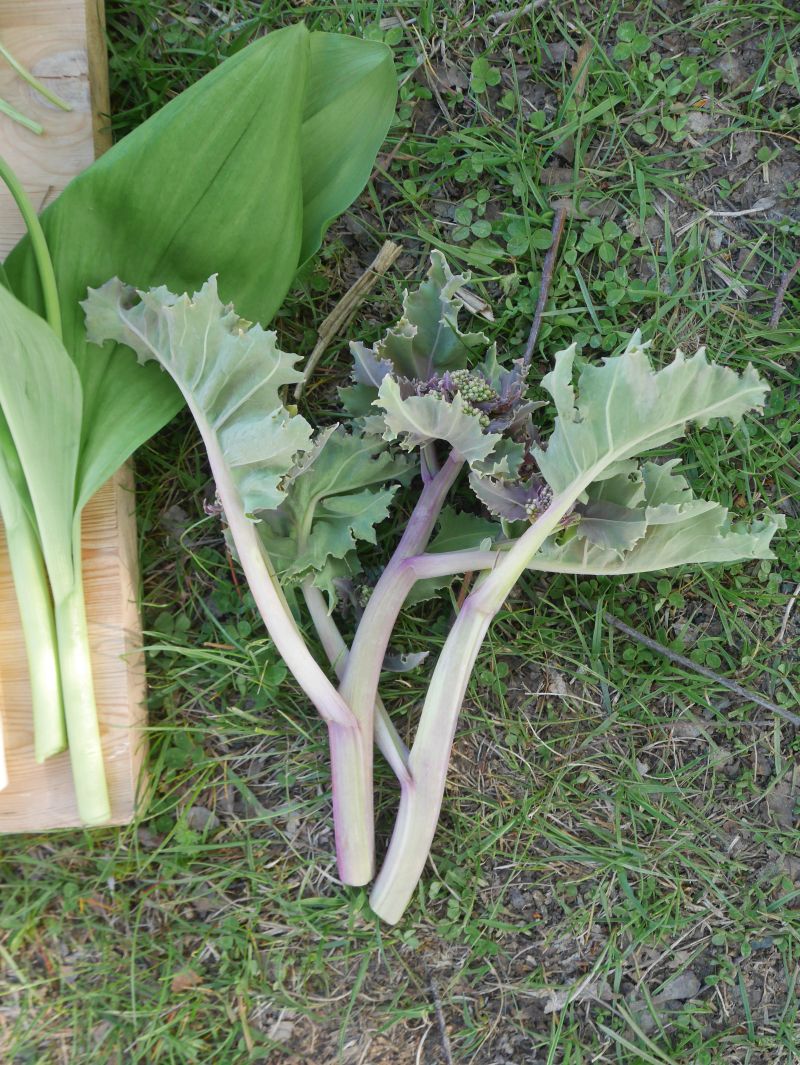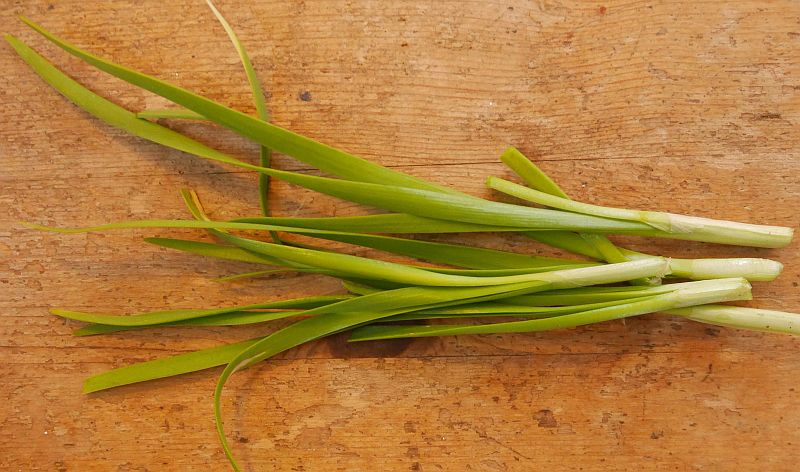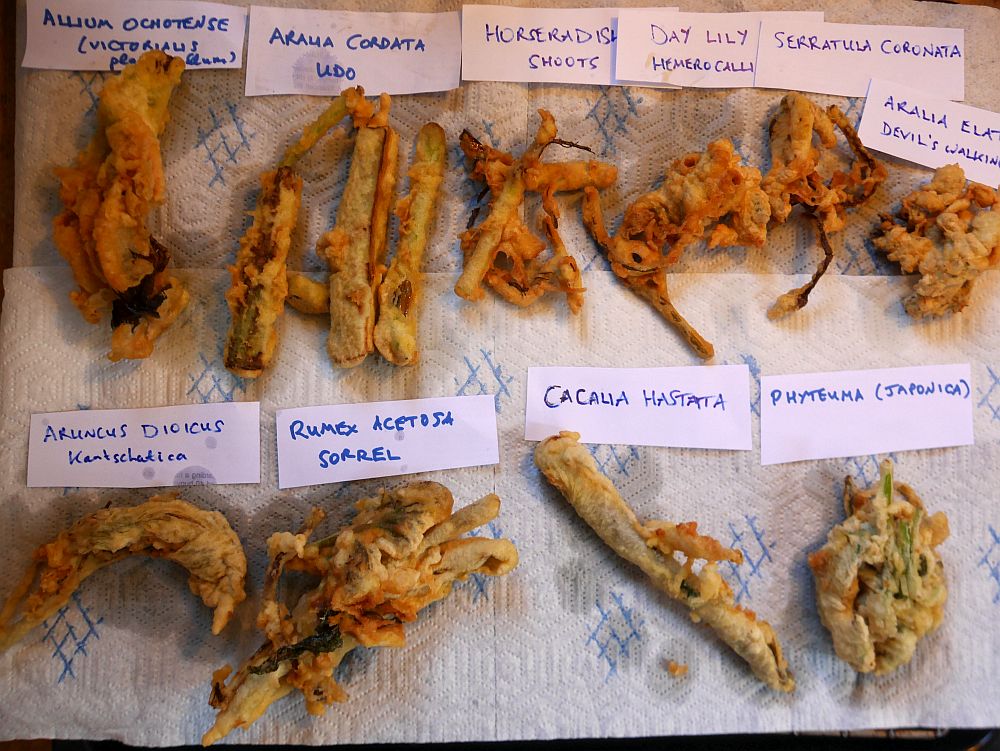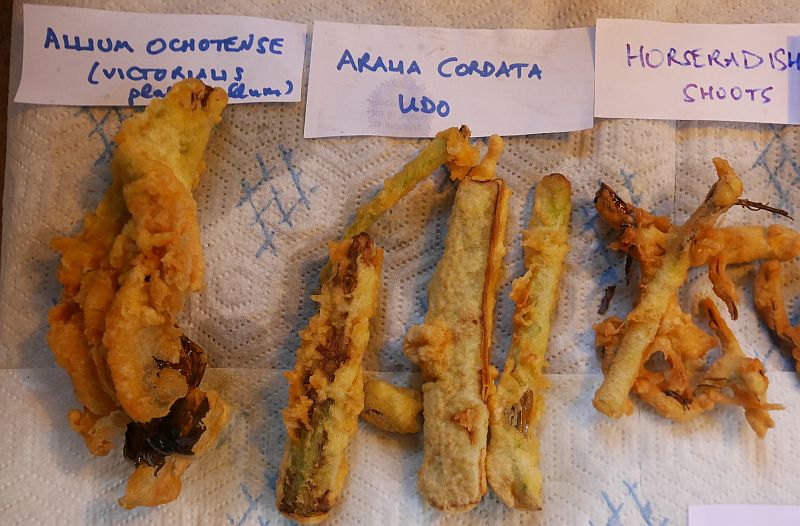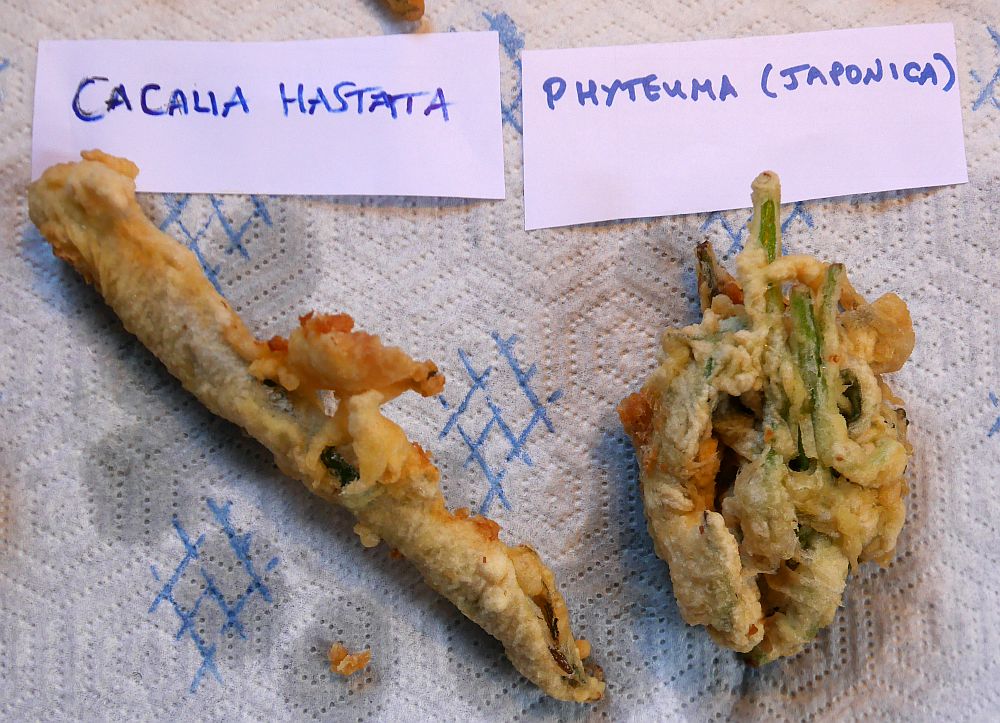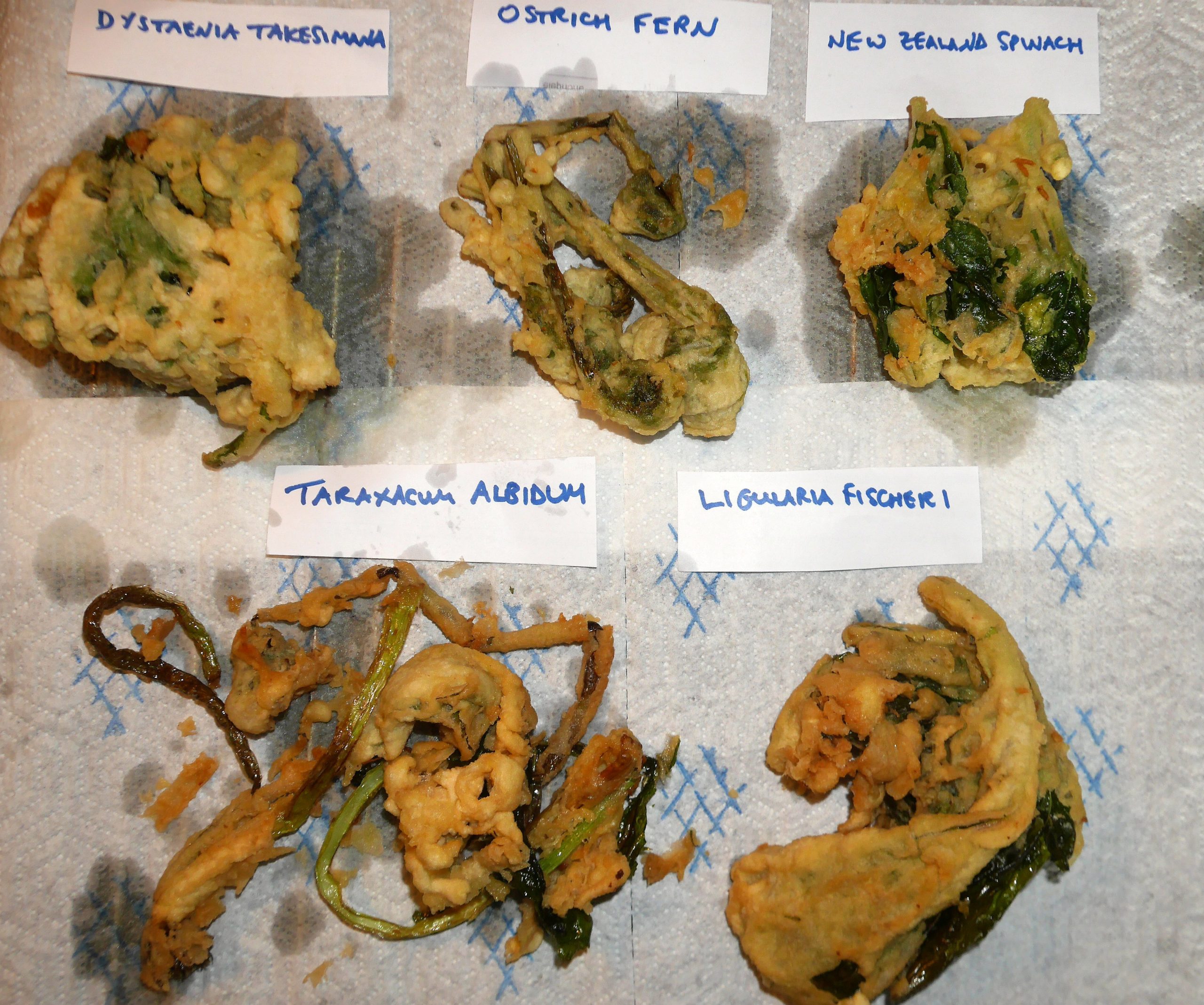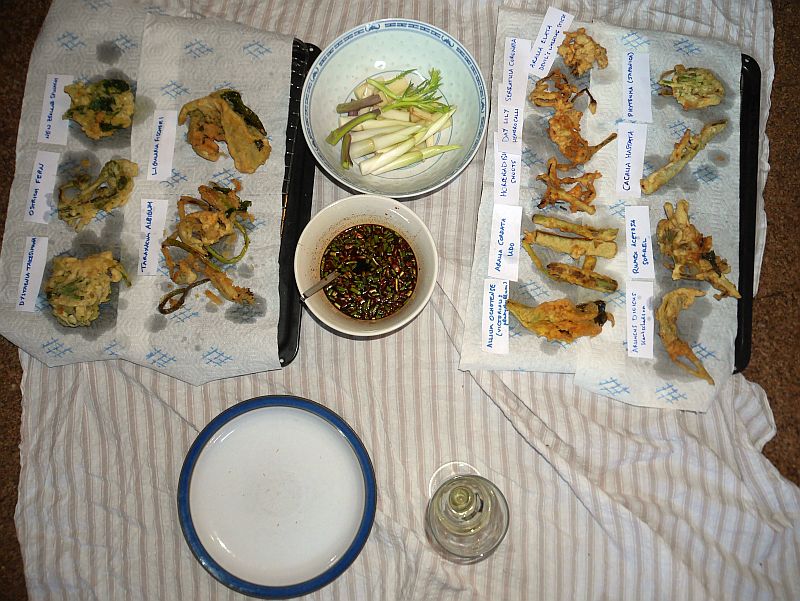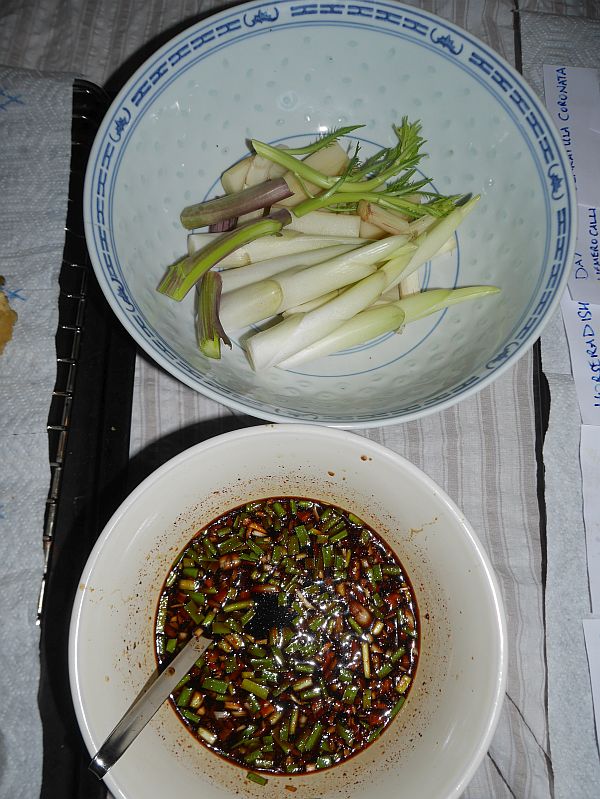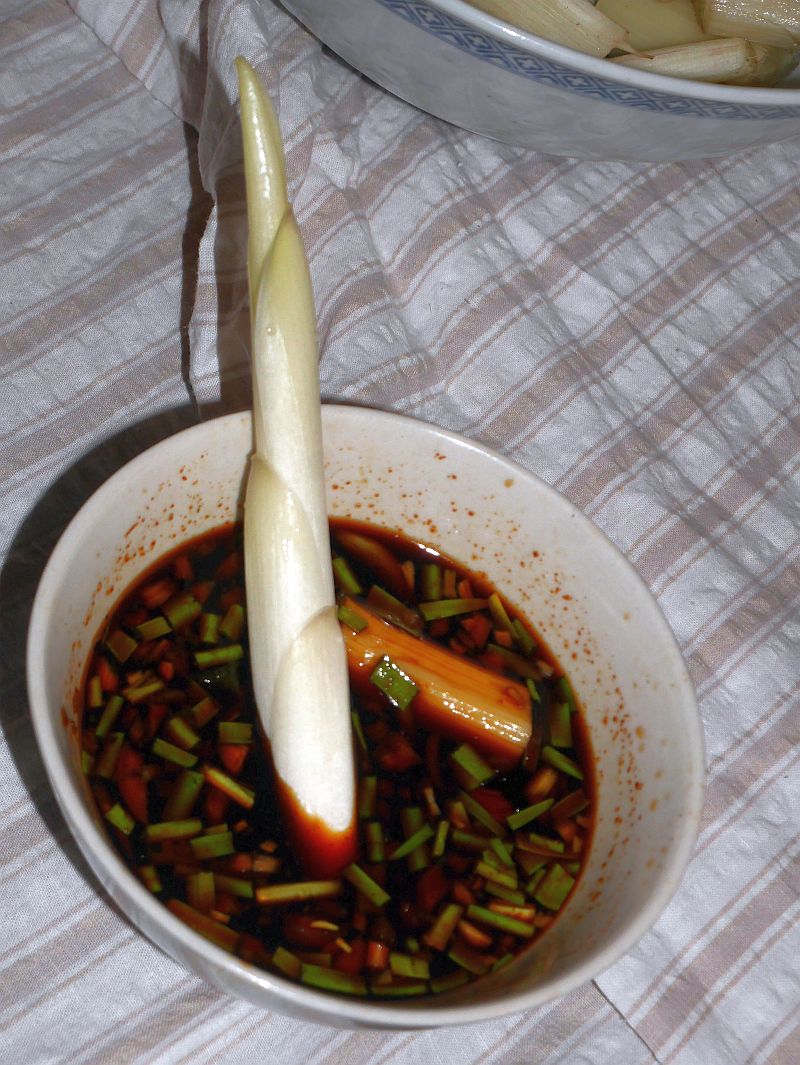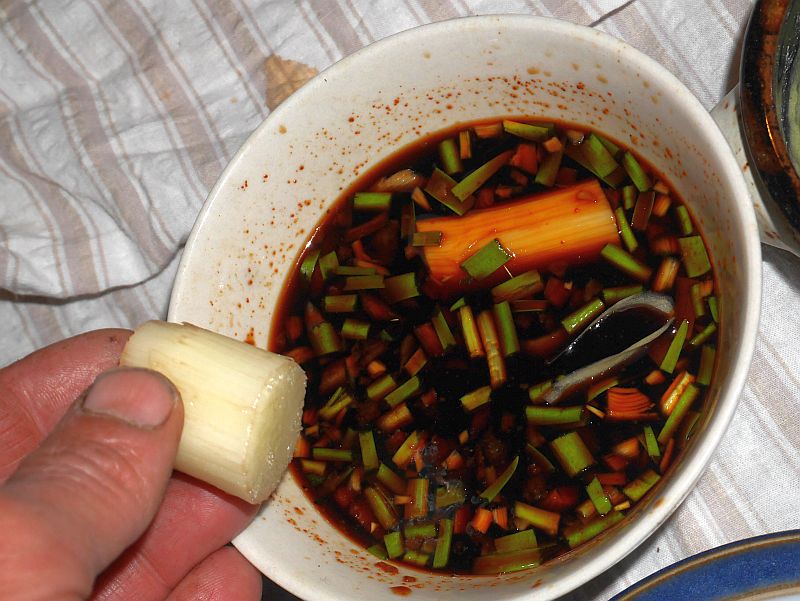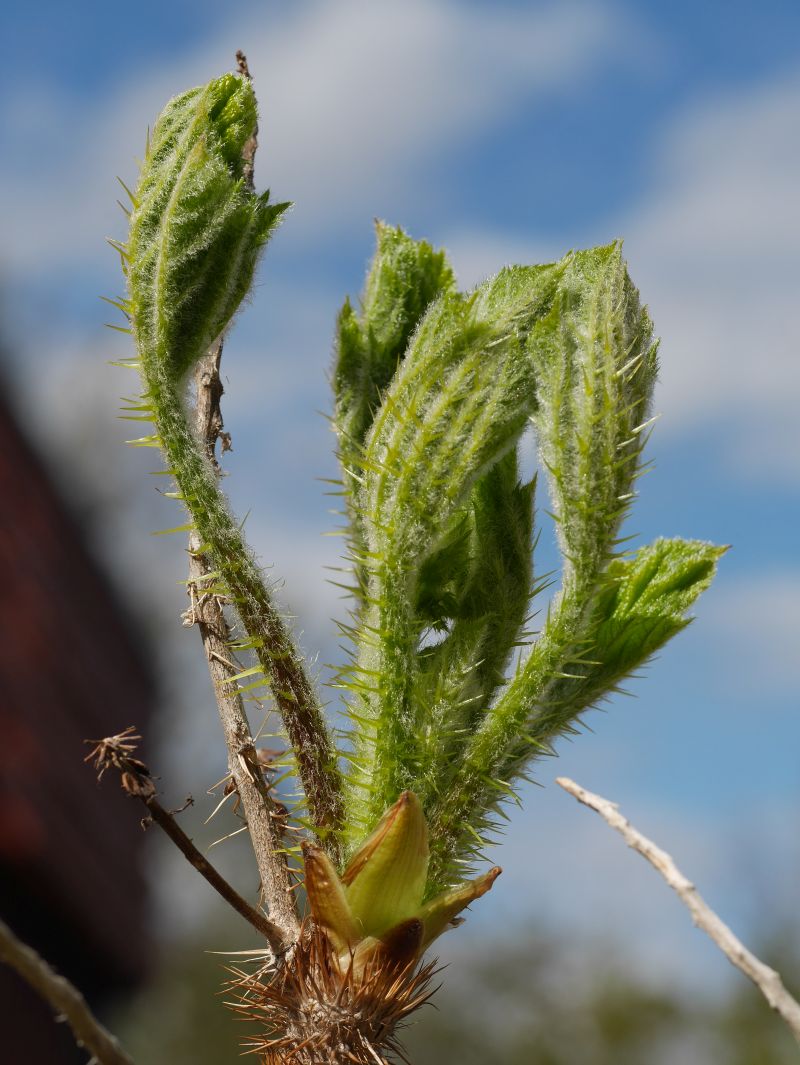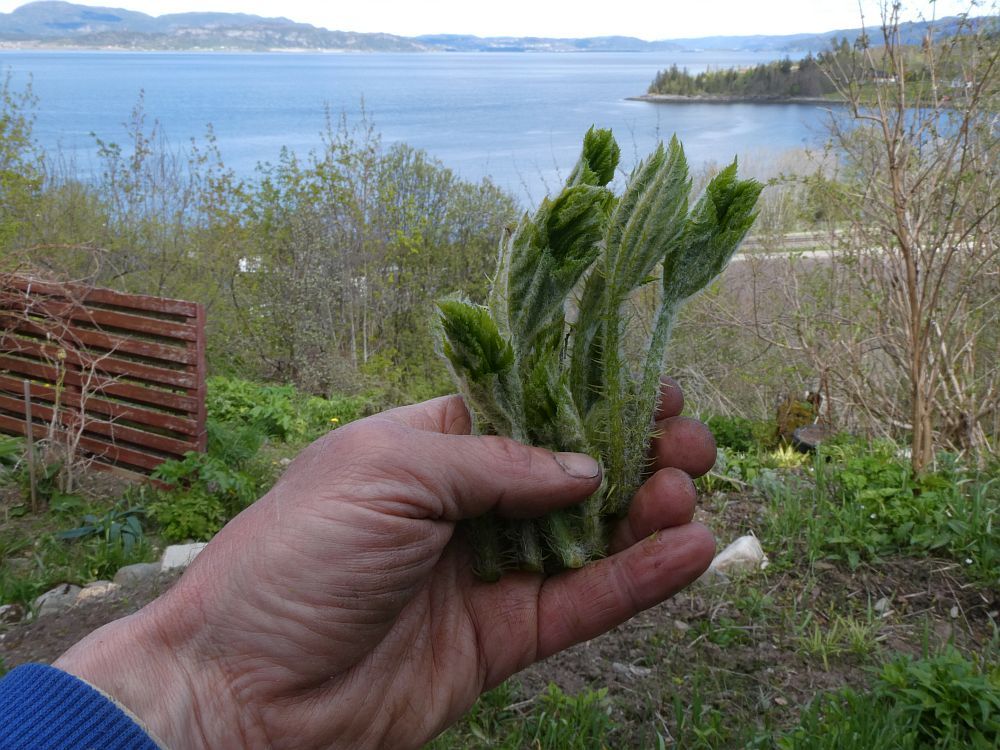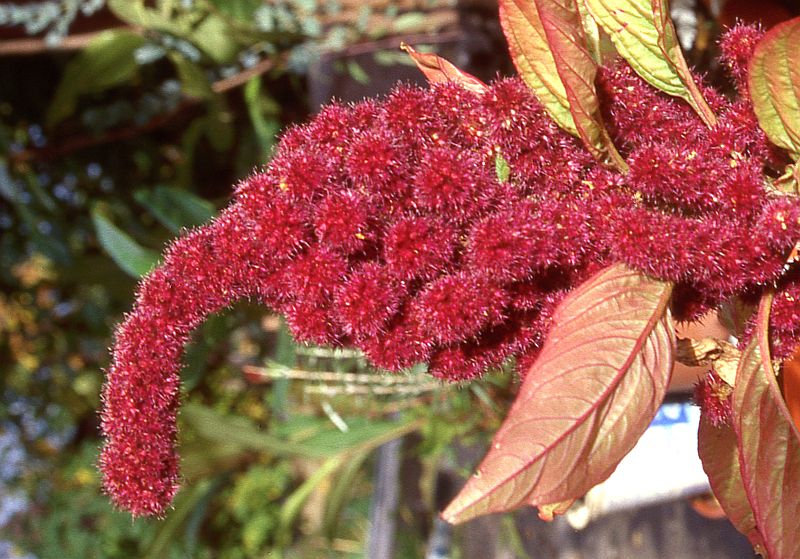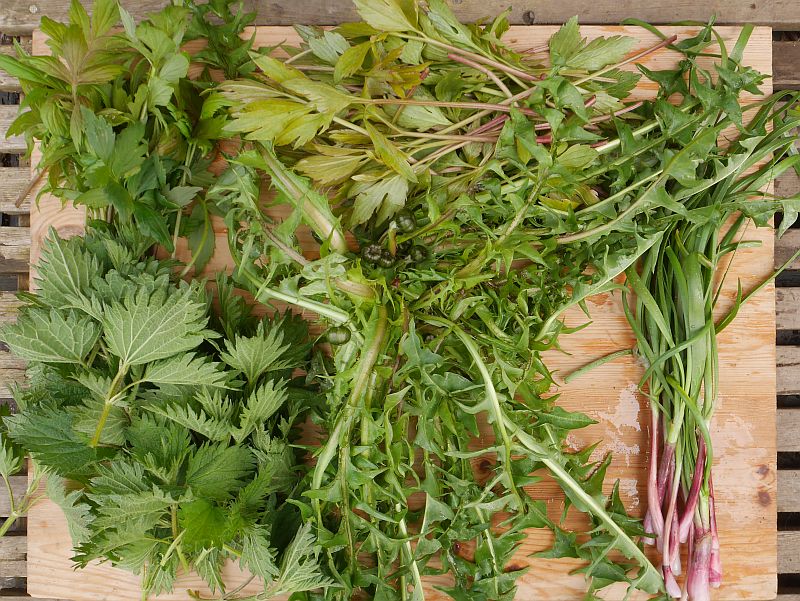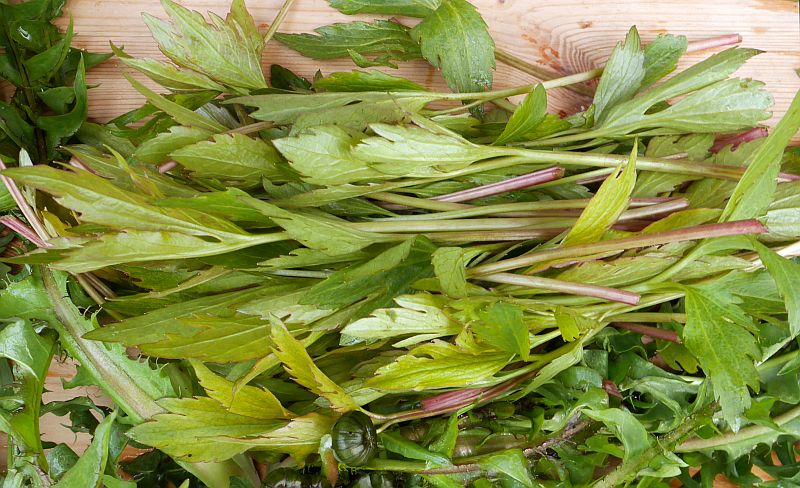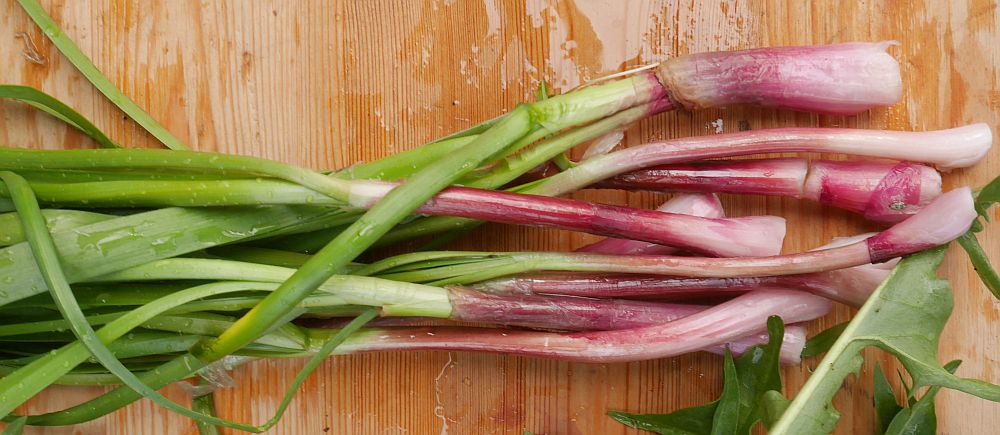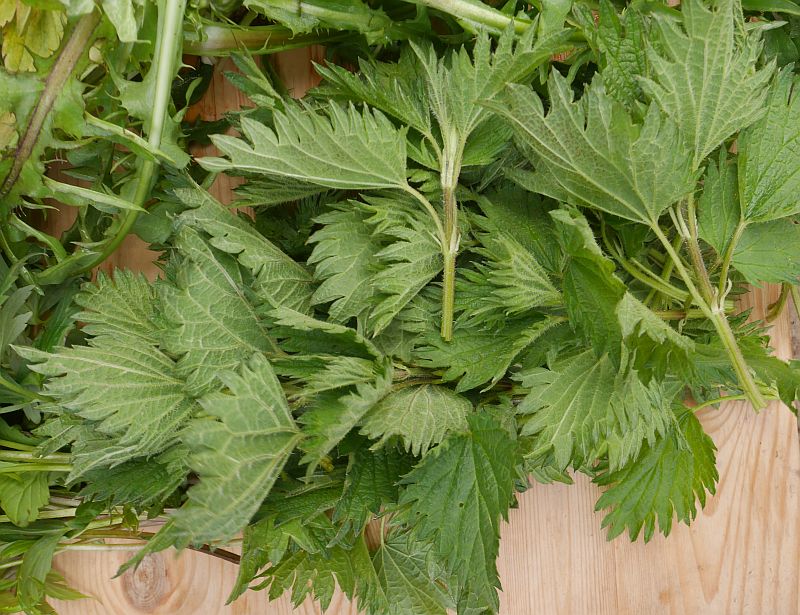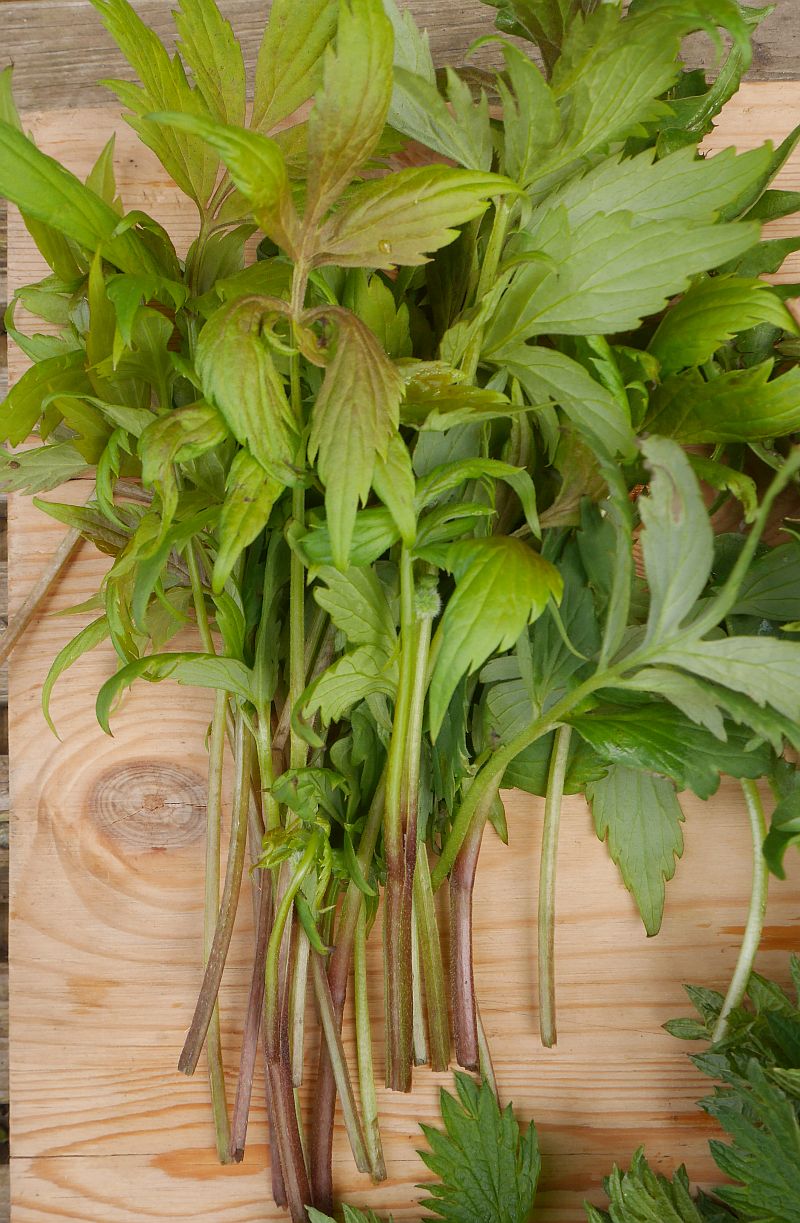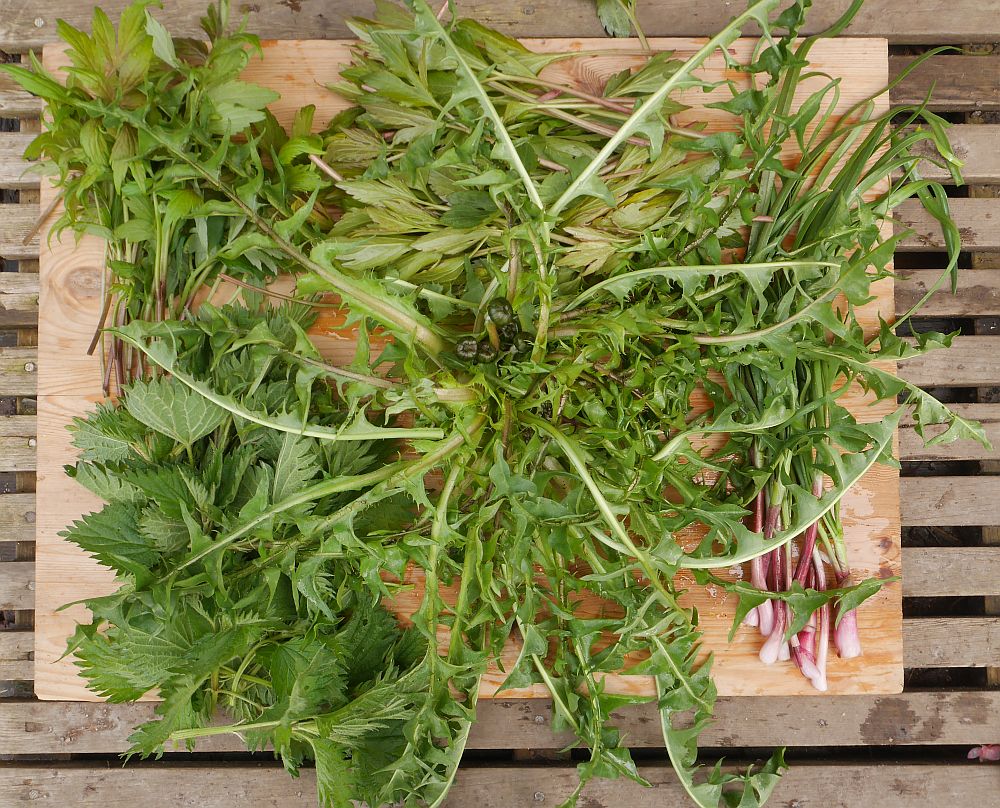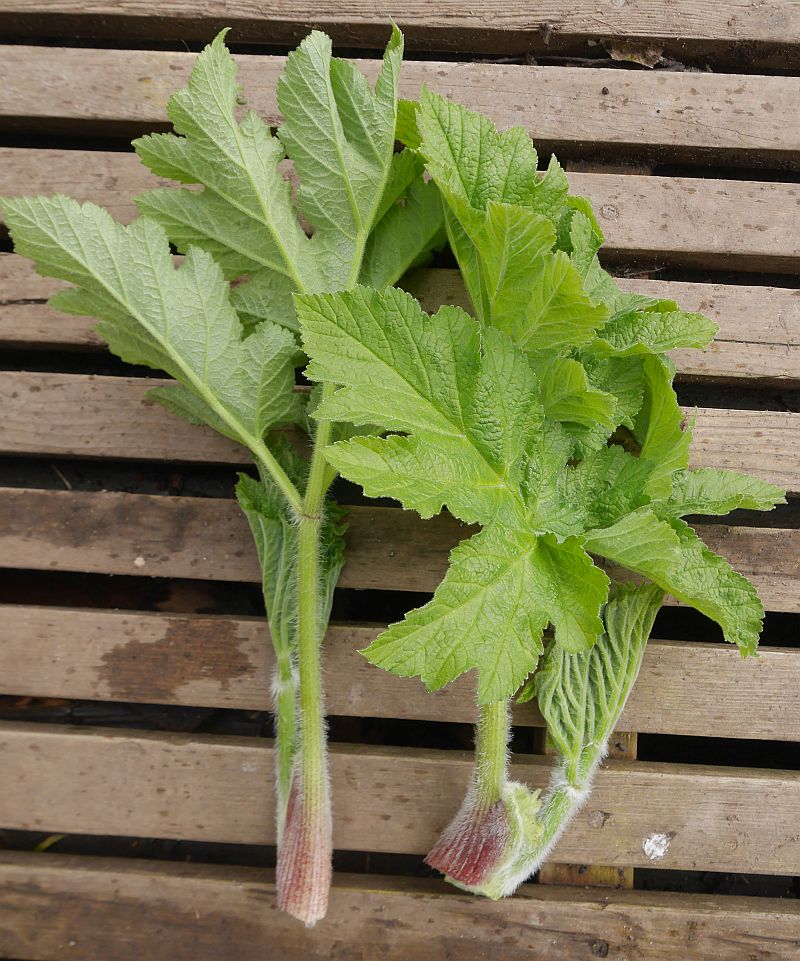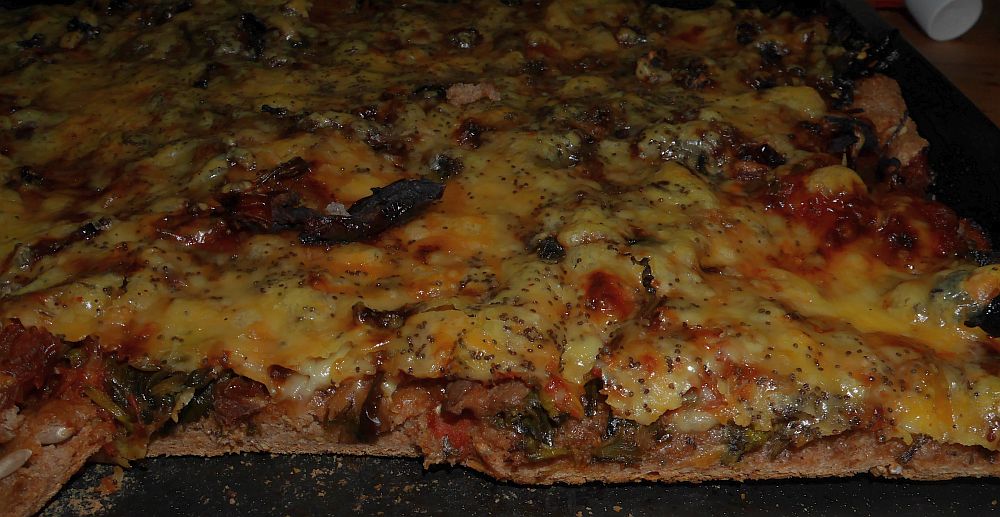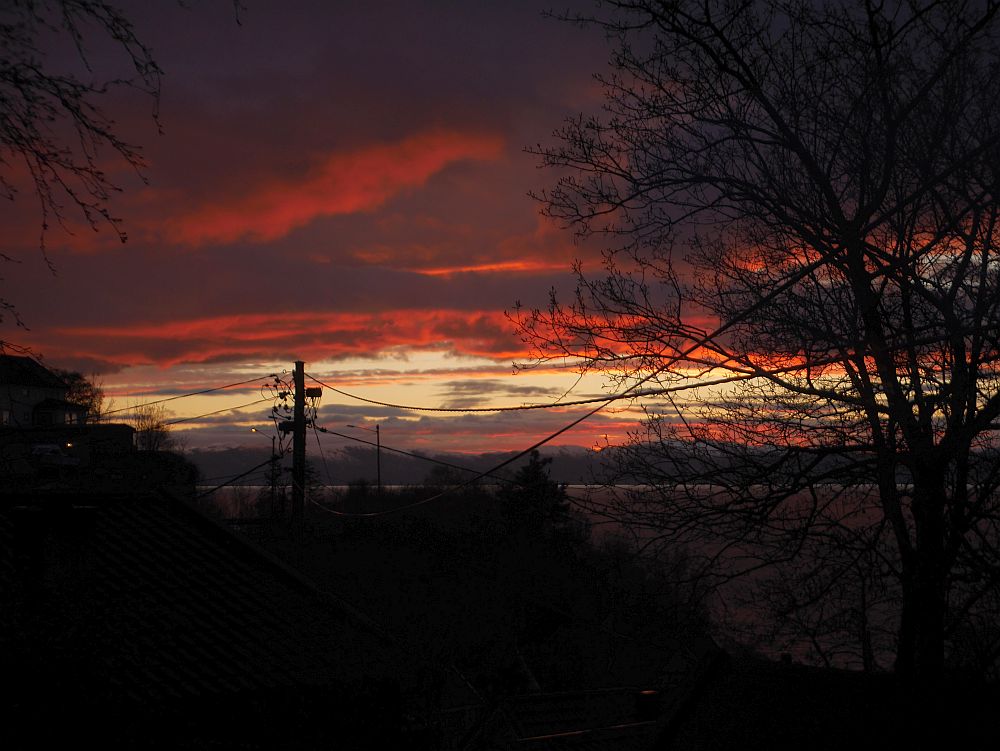Last night we made a green pea soup and apart from the Hablitzia (Caucasian spinach / stjernemelde), I used perennial vegetables growing in a wild part of the garden. With little or no help from me there’s a bounty of wild edibles in this area under wild hazels (Corylus avellana) and this made for a delicious pea soup with masses of greens.
Campanula latifolia is documented as used in spring soups in the 16th century in my area in Norway and Heracleum shoots are also a tradional soup ingredient, in particular Russian borsch now thought of as a beetroot soup was originally made with hogweed shoots.
Monthly Archives: May 2020
Fascinating fasciated dandelions
I was working at Væres Venner Community Garden yesterday and noticed a deformed (fasciated) dandelion flower. This can be caused by a range of factors including random genetic mutation, virus and bacterial infections. Damage to the plant’s growing tip and exposure to cold and frost can also cause fasciation and with the very cold weather after a mild start to spring is probably the cause in this case (see https://en.wikipedia.org/wiki/Fasciation).
Searching around I discovered two other fasciated dandelions! This phenomenon is rare, but I have seen it before a few times. However, I’ve never seen more than one plant affected within a small area before! I photographed each of the plants below and fantasising about making fascinating fasciated dandinoodles* or rather dandi-lasagne as the flower stems are flattened :)
Unfortunately, this mutation doesn’t seem to return in the following year in dandelions..
*Dandinoodles (løvenudler) are made from quickly boiling the flower stems perferably before the flowers open and just mixing with butter or olive oil:
Fasciated Plant #1 had twin or siamese flowers:
Fasciated Plant #2 had 6 flowers on the one stem and a twisted flower stem! Note that the fasciated stem is shorter than the normal flower stems:
Fasciated Plant #3 was different again, this time a single distorted flower (cresting):
Japanese white dandelion
My Taraxacum albidum is looking good at the moment!
The seed for this came from the Scottish Rock Gardening Club seed list 2016/17 (SRGC3660) and I planted two plants here. However, they look different in that the leaf shape is different (T. albidum is described as having deeply indented leaves) and only one has hairy scapes (as T. albidum). I suspect some crossing has been going on.
T albidum is itself a hybrid between white flowered Taraxacum coreanum and Taraxacum japonicum.
Korean tempura and dipping sauce for perennial vegetables
AROUND THE WORLD IN THE EDIBLE GARDEN; Part 2 – Korea
Inviting you to the second in a series of dinners from Malvik’s Edible Garden where we “forage” from different parts of the world!
We don’t often eat oily food, but now and again its great and this meal was exceptional!
From top left and clockwise:
Ligularia fischeri
Dystaenia takesimana (Giant Ulleung celery, seombadi)
Aralia cordata (udo) (blanched for dipping and green for tempura)
Phyteuma (should have been japonica, but I used nigra; svartvadderot)
Allium victorialis subsp platyphyllum (victory onion; seiersløk)
Aralia elata (devil’s walking stick, fandens spaserstokk)
Hosta “Frances Williams”
Hemerocallis dumortieri (flower shoots) (dayliliy, daglilje)
Parasenecio hastatus (also the first time I ate this one and it was delicious, but I wouldn’t advise eating a lot: see here http://www.edimentals.com/blog/?p=23845)
Matteuccia struthiopteris “Jumbo” (ostrich fern; strutseving)
Taraxacum albidum and to the right of this:
New Zealand spinach and
Serratula coronata (also a first for me; the subspecies insularis is eaten in the Far East)
Oplopanax horridus (North American species substituting Asian species Oplopanax japonicus or Oplopanax elatus)
More information with the pictures!
Föhn Skyscapes
Icterine warbler and Brambling
A few days ago it was snowing, today it could reach 20C for the first time this year! And the warmer southerly winds has brought in a new wave of seasonal migrants….it’s always nice to hear my first Icterine warbler (gulsanger) and I also heard my first cuckoo (gjøk)!
And a brambling (bjørkefink) was again singing its nasal song in the garden:
Elephant Head
I trialled over 50 different amaranths here about 15-20 years ago, hoping to find one that was early enough to produce seed in our short cold summer. The search was unsuccessful…but this was my favourite edimental variety, introducing Elephant Head!
Cherokee Pizza
AROUND THE WORLD IN THE EDIBLE GARDEN; Part 1 – The Cherokee lands of Eastern North America
The first in a series of dinners from Malvik’s Edible Garden where we “forage” from different parts of the world!
Cherokee Pizza is of course better known as Cherokizza…go on, look it up :). This is the classic Native American Italian dish and it was made in Norway today! All you need is a good selection of Cherokee wild vegetables:
Appalachian greens / kyss-meg-over-gjerde (Rudbeckia laciniata); see http://www.edimentals.com/blog/?p=22018
Nodding onion / prærieløk (Allium cernuum)
Stinging nettle / brennesle (Urtica dioica)
Virginia waterleaf / Indian salad (Hydrophyllum virginianum)
Dandelion / løvetann (Taraxacum spp.) (a giant individual, as you will see from the pictures, growing on seaweed on the sea kale bed)
Cow parsnip (Heracleum maximum)
I used a thick 100% whole grain rye sourdough base for the pizza, so a bit of Denmark in there too!
Greys and browns
It’s still cool here, but with the snow line receded upwards we are left with a lot of brown from the naked fields and the greys of the fjord and clouds…with a welcome return of reds and yellows last night as the clouds broke up for a nice sunset.
Singing Brambling
Bramblings (bjørkefink) are common breeding birds at higher elevations, but it’s just possible that they will breed here one day. This is the closest I’ve got with a male singing the last few days in the garden, here atop a Norway maple (spisslønn), the flowers still waiting after two very cold weeks!

